Conserving Land for the Future
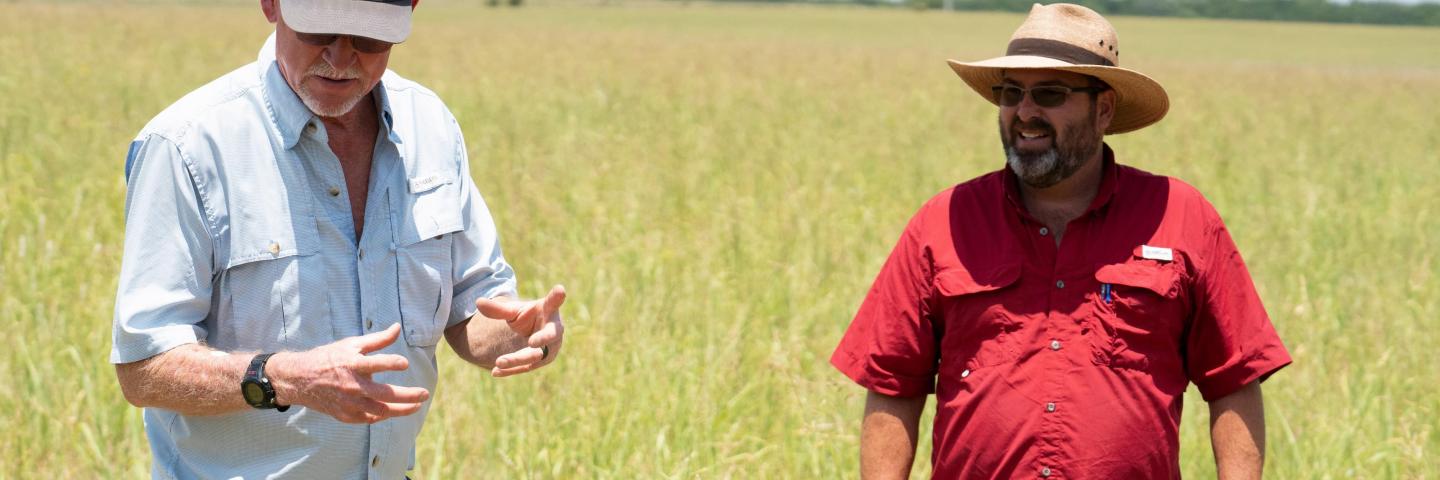
NRCS staff helps Texas landowner restore pasture and wildlife habitat through conservation planning and the Environmental Quality Incentives Program.
How does a city boy grow up to be a country boy?
“My interest in being out in the country is the way I was raised,” said Chuck Emerson, co-owner of Dice Grove Farms in Belton, Texas.
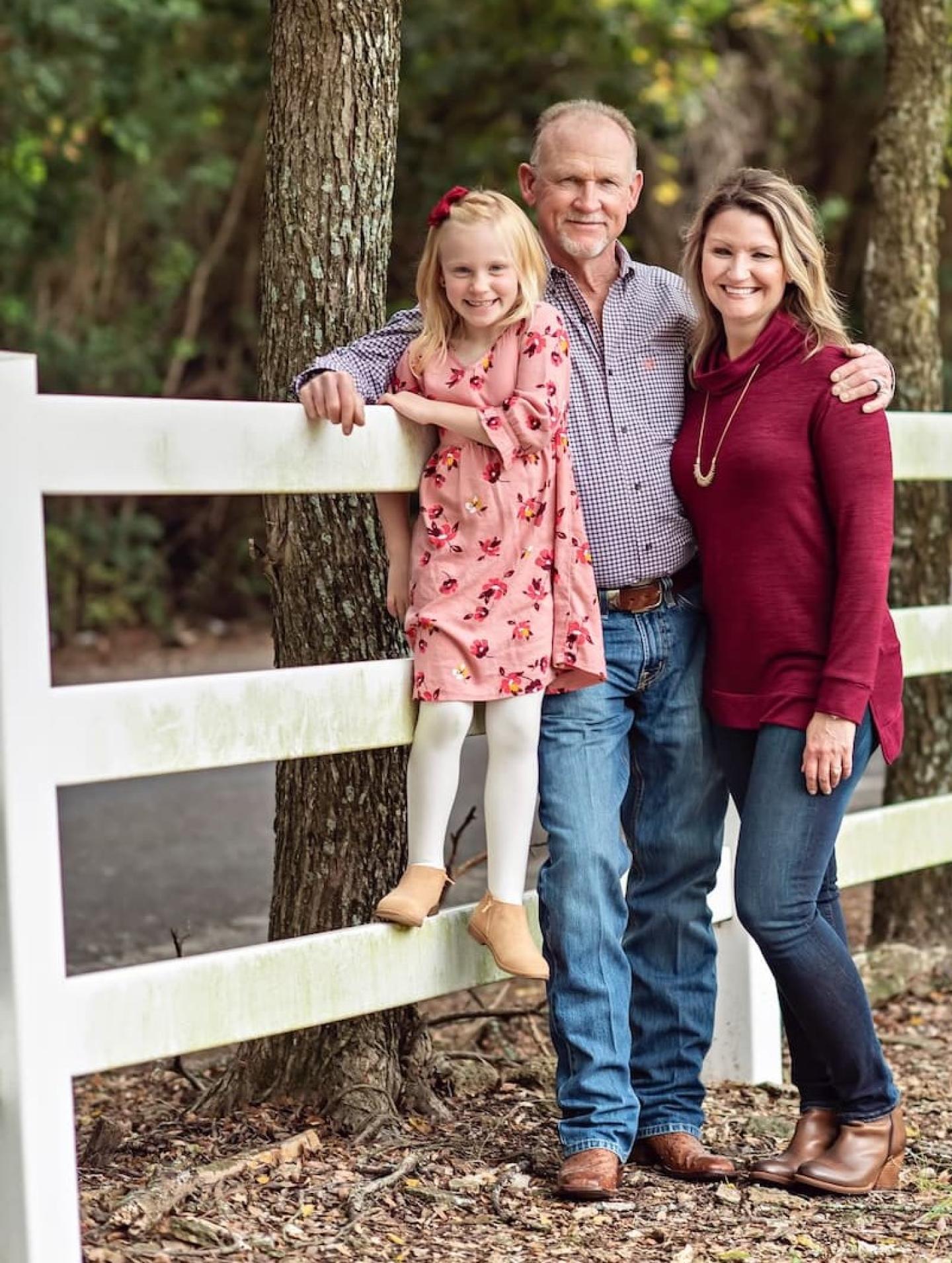
Emerson’s dad, who was born and raised on a farm in Athens, Texas, made a point to have his boys, who grew up in the Dallas-Fort Worth area, go to their grandparent’s farm at least a half a dozen times a year — and for Chuck, more often during the summer months.
“He just thought it was important that we get out and see what Mother Nature had for us," said Emerson. "I didn’t complain."
“I was always the grandkid who wanted to go and spend the summers with my grandmother,” he said. “I just really enjoyed being out in the country.”
Having grown up in the big city, it felt like an escape, whether it was to explore, hunt or fish.
It's no surprise when the boy from the city had the opportunity to buy a place in the country, it didn’t take Emerson long to decide.
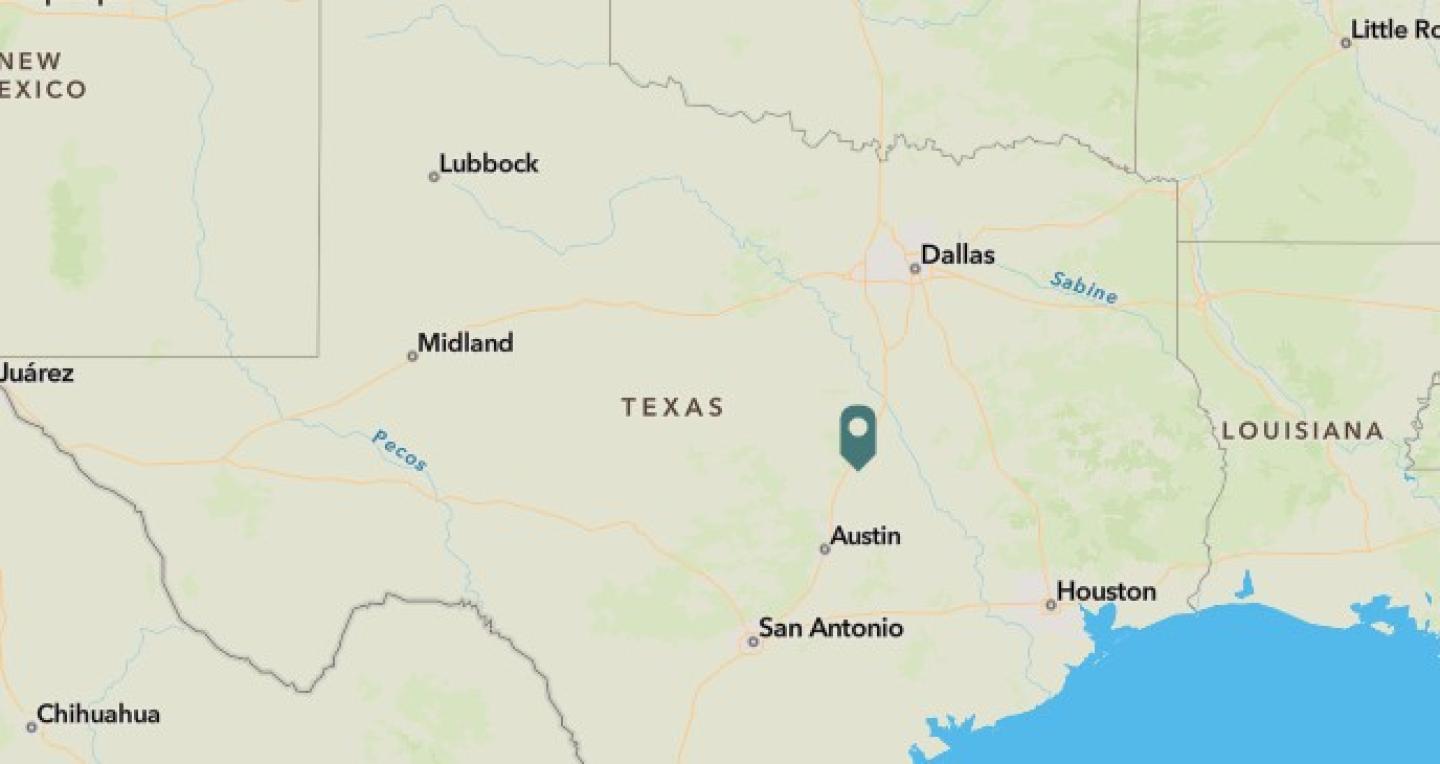
“I recall telling the folks who we bought this from — it’d been in their family just three years shy of 100 years — I’d be honored to take care of it if they would give me that opportunity," said Emerson.
As you look upon the vast green acreage with grazing cattle, peaceful ponds, deer, and turkeys running about, you can see Emerson kept his promise.
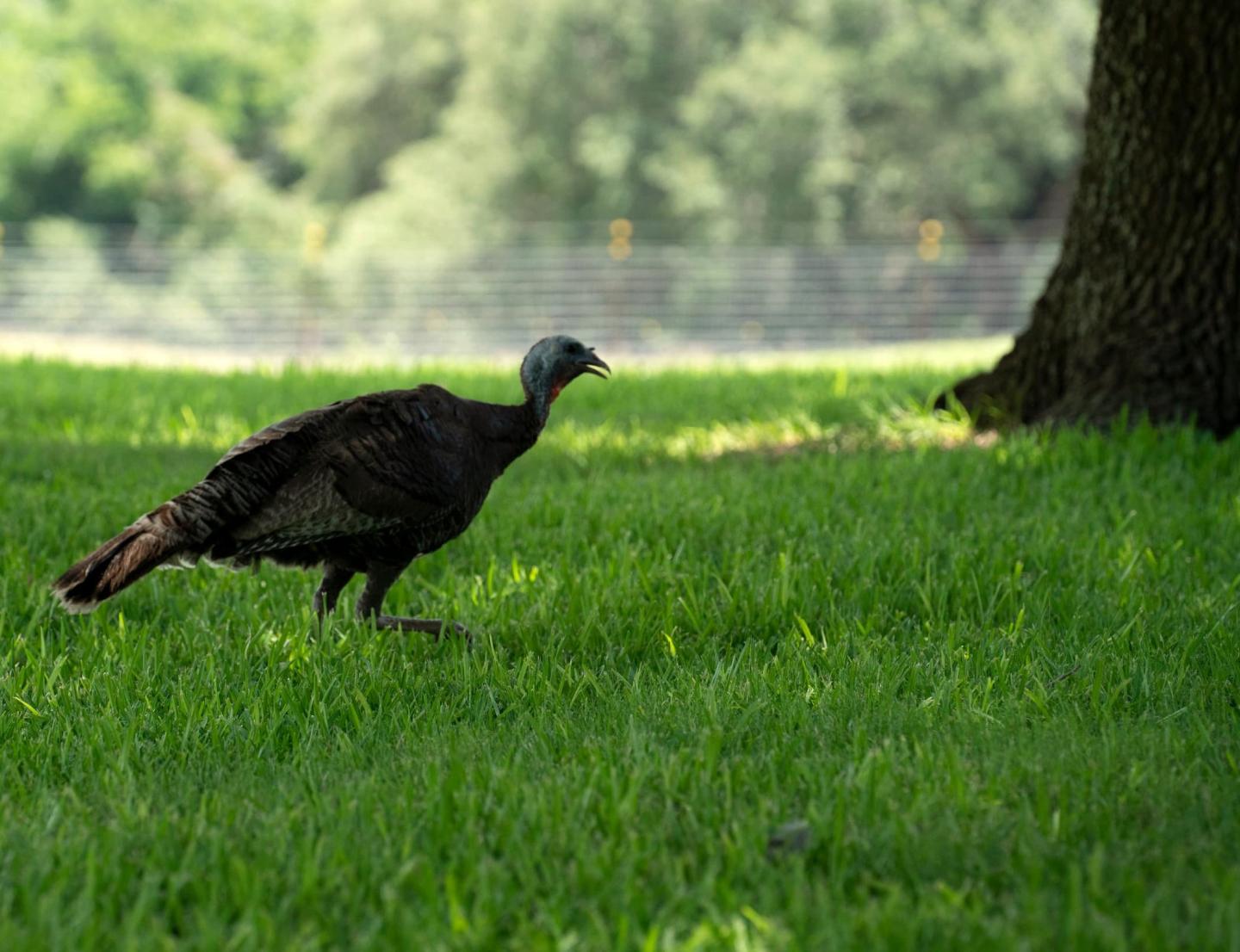
"I think it’s really important we maintain this land and we leave it in better shape than the way we got it," said Emerson.
It’s no surprise that Emerson developed a working relationship with the U.S. Department of Agriculture Natural Resources Conservation Service (USDA NRCS).
A Chance Meeting Over a Thistle
Emerson recalls noticing a weed on the property, that he described as a nasty looking weed that had purple thistles with long spikes. Passing by the NRCS office in Bell County, he noticed they had a poster on their door that showed this purple thistle.
He went in and introduced himself to Troy Reinke, the local NRCS district conservationist, who educated him on the thistle, and how to deal with it, or he would have a pasture full of it. That discussion transitioned into how Emerson desired to take the plowed portions of their land back to native grasses.
“Reinke just started laying out everything the NRCS could do for me to help," said Emerson.
Emerson utilized the conservation technical assistance that NRCS provided to develop his conservation plan for the farm.
He also applied for the Environmental Quality Incentives Program (EQIP), which provided financial assistance for installing the recommended practices in his conservation plan, like planting a multi- species cover crop, treating herbaceous weeds and prescribed grazing.
After Reinke moved away, Emerson started working with the new NRCS district conservationist for Bell County, Jeff Brister.
“Jeff’s been a pleasure to work with, coaching me along the way,” said Emerson.
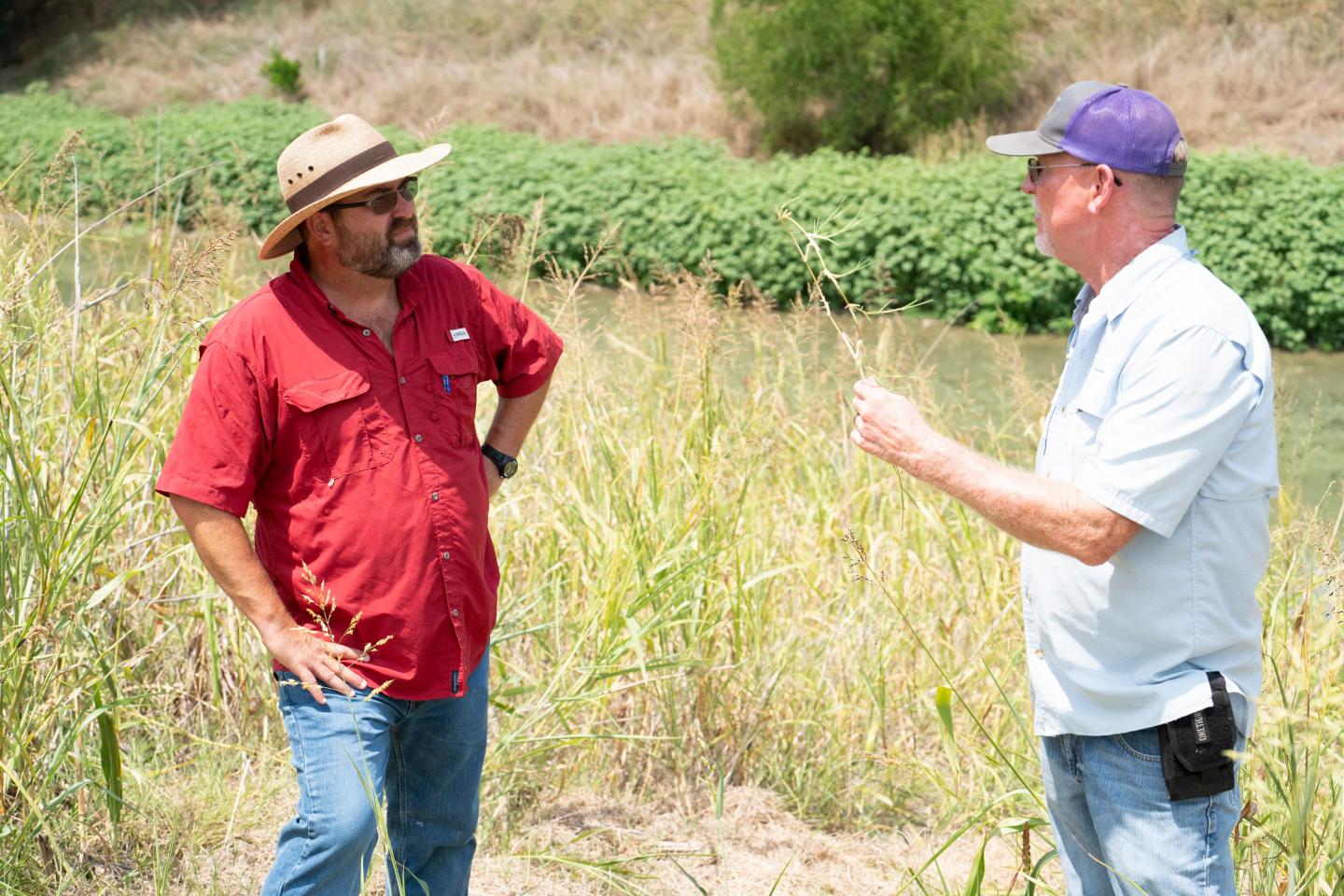
Brister described Emerson as a very progressive landowner who cares a lot about his land and conservation.
“Wildlife is important to Chuck as well as his ag operation, and he tries to balance both in a very conservation-minded way,” said Brister.
Getting Back to Basics
The land had been used for growing crops and raising cattle.
"More than anything, I wanted to return this land back to what it was — or what I envisioned it was before man set foot here,” said Emerson. “I wanted it to be conducive — not just for wildlife — I wanted to be able to have some cattle but make it balanced for wildlife and try to reverse some of the damage from man.”
Emerson worked with NRCS to help repair soil health and restore native grasses to his land.
As he continued to learn about land conservation, soil health became of great interest and importance to Emerson.
He recalled meeting Betsy Ross, founder of Sustainable Growth Texas, LLC and Betsy Ross Grass Fed Beef, who encouraged him to explore how to return the land to the native grasses, while avoiding modern fertilizers.
“Her main focus was how do you get the biology of the soil right and it’s a process," said Emerson. "And it’s not an overnight process.”
The plan to get back to native grasses involved at least a year of cover crops. Emerson went with two years. The recommended cover by NRCS was a quail and turkey mix.
Emerson was happy to oblige, as one of his goals was to attract as much wildlife as possible.
“That is when we started seeing the quail,” said Emerson.
Emerson reached the final planting stage of the natives on 90 acres, which he says is expensive, but explains it’s a one-time planting. Emerson worked closely with Brister throughout the entire process.
“Taking cropland out of production and putting it into native grasses was an important step for Chuck, in order to help build habitat and maintain biodiversity on his farm,” said Brister.
Creating a Good Environment for Wildlife
With his primary goal of taking the land back to its native state, Emerson said he was happy it was having a positive effect on the wildlife too.
“They were here before us and there’s things that I can do, like removing cedars (except in drainages), planting cover crops, getting the natural prairies back, that will help that cause,” said Emerson.
Another lightbulb moment was when it came to livestock management.
“I recognized in order to have turkey and quail, it was imperative that they have grass, which meant, Chuck you need to get rid of some cows," said Emerson. "You have too many cows.”
He’s since made a point to cut back on his cattle to meet the grazing capacity and the weather challenges of drought.
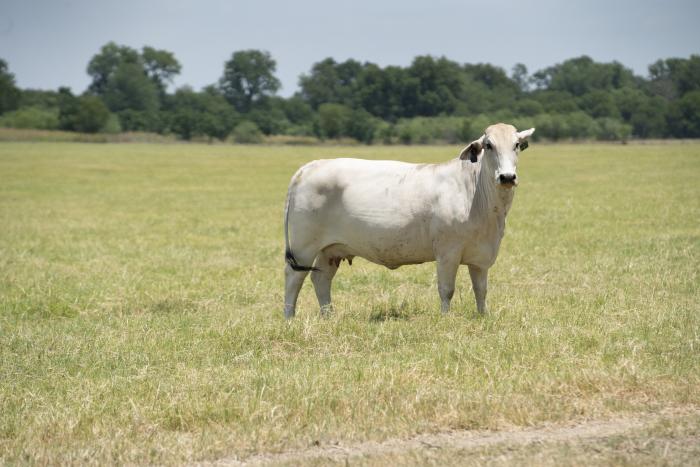
“By NRCS showing me how to plant this front pasture in cover crops and with the prairie grasses coming on, it’s had a tremendous positive impact in having quail,” said Emerson.
As a result, the grasses are doing better, the turkey population is improving, and he’s even seen a few quail coveys.
Not tilling the ground, keeping the grass and forbs alive and present, even if it looks dead, keeps that habitat available for the birds.
“Wildlife is an important resource to the state of Texas, and maintaining that biodiversity is important to the state as a whole,” said Brister. “One of the benefits of taking cropland or previously plowed land and putting it into native pastures or range mix would be, you’re increasing biodiversity, improving habitat and protecting the soil from erosion.”
Water Challenges and Management
“I would say water is the most important resource we have," said Emerson. "This land needs it."
He worries about the state of the water: the droughts not only negatively impact the surface conditions but the aquifers too. Texans need to do more to conserve this most precious resource.
“What are we doing to make sure there’s going to be ample water for future generations?” asked Emerson.
While things were going right on the forage management and wildlife fronts, Emerson encountered a challenge in the form of soil erosion. The Little River, which runs along the northern edge of the property, was causing significant erosion. Large chunks of riverbank were falling into the river after heavy rainfalls and/or upstream lake releases.
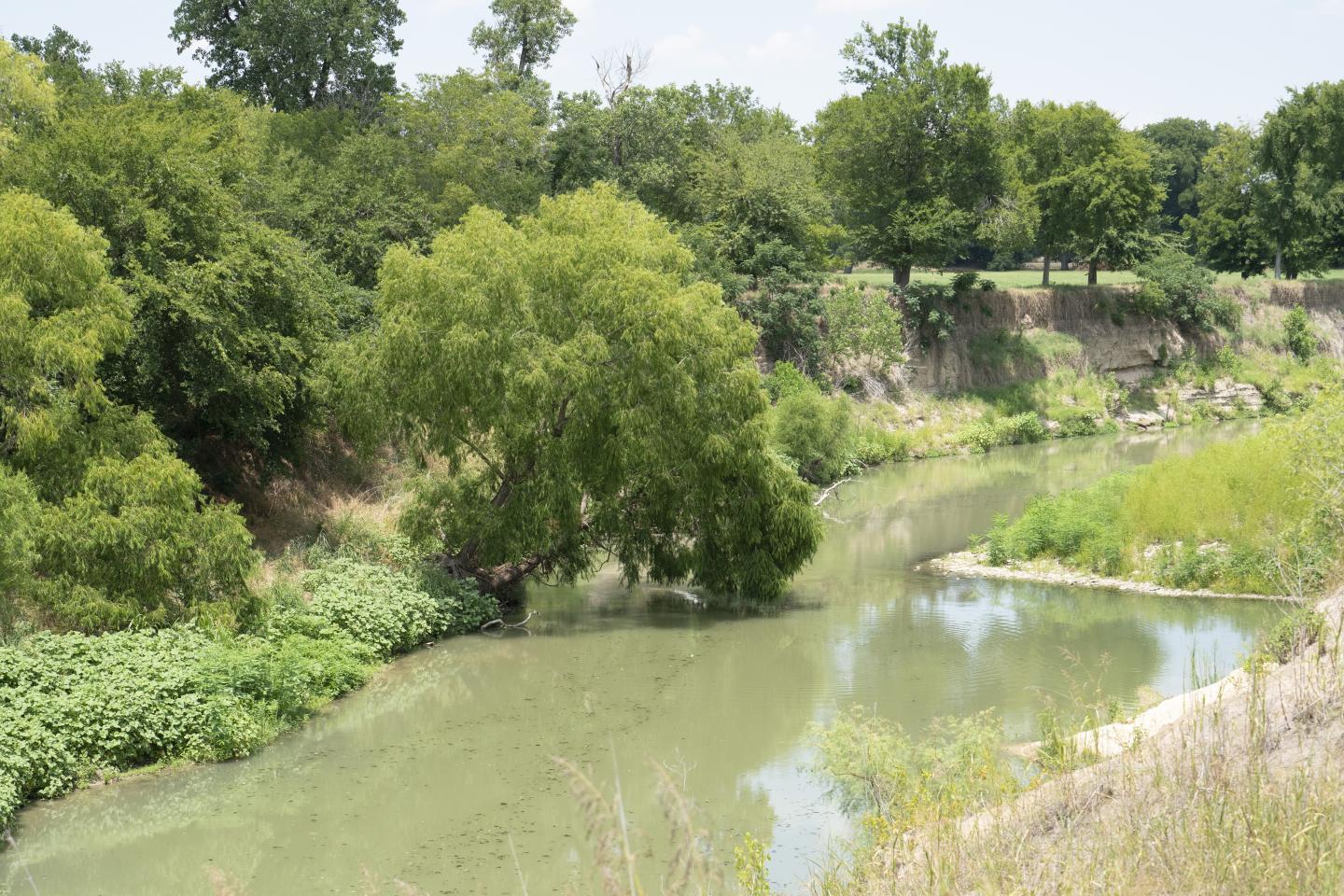
In response, Emerson on his own, strategically carved back the riverbank to stabilize the slope.
“In three months’, time,” said Emerson, “it was totally grassed over.”
The grass has since developed a deep root system which is holding the soil in place to protect from further erosion. Brister has encouraged Emerson in support of the conservation work he has done own his own.
Emerson worked with NRCS to ensure the cattle and wildlife have a water source wherever they roamed; he maintains five strategically located ponds with solar powered water pumps, to take the spring and run-off water back to other higher elevation ponds.
Past, Present, Future
More than 13 years invested in Dice Grove Farms; Emerson has no plans of stopping what he’s started. The passion of the land was important to his grandparents, to his dad and then to himself. He wants to pass this love of the land to his children and grandchildren, with the hope they, too, will see the value in the land beyond a real estate price tag.
“Not everybody’s going to find it fascinating and be drawn to it and be passionate about it, but somebody needs to be,” said Emerson.
Emerson has made it a point to invite folks to the farm. He wanted people, especially children, to come learn and enjoy the land, so his focus is on exposing the younger generations.
“The only requirement is to bring a kid,” said Emerson. “Bring your son, your daughter, a friend’s son or daughter. I just think it’s terribly important we as a country pass this on.”
While hunting may seem a contradiction given Emerson’s drive to improve his land for wildlife as well as his cattle, he understands wildlife must be managed. He knows the importance in maintaining populations at levels compatible with land’s capacity.
“Our natural resources are a very important resource to society as a whole, and the protection of those resources is very important, because if we lose them they could be lost forever,” said Brister. “Working with Chuck Emerson has been a pleasure. He’s doing a great job. He’s a true conservationist.”
Emerson is set on making sure the land he’s working so hard to improve and protect, stays that way for generations to come. That’s why he’s been researching conservation easements, including agricultural conservation easements available through NRCS. Aside from tax advantages, he explained they are a means of protecting this land and natural resources in perpetuity.
“And that’s to say to my kids and grandkids, or whomever they might sell to, that the condition you see this land in, you must keep it in this condition,” said Emerson. “They can do everything I do right now — farming, ranching, hunting and fishing. You just can’t carve it up and subdivide it.”
Emerson continues working on the land and natural resources with NRCS and on his own, to fulfill his promise to the family he bought the farm from and to himself.

